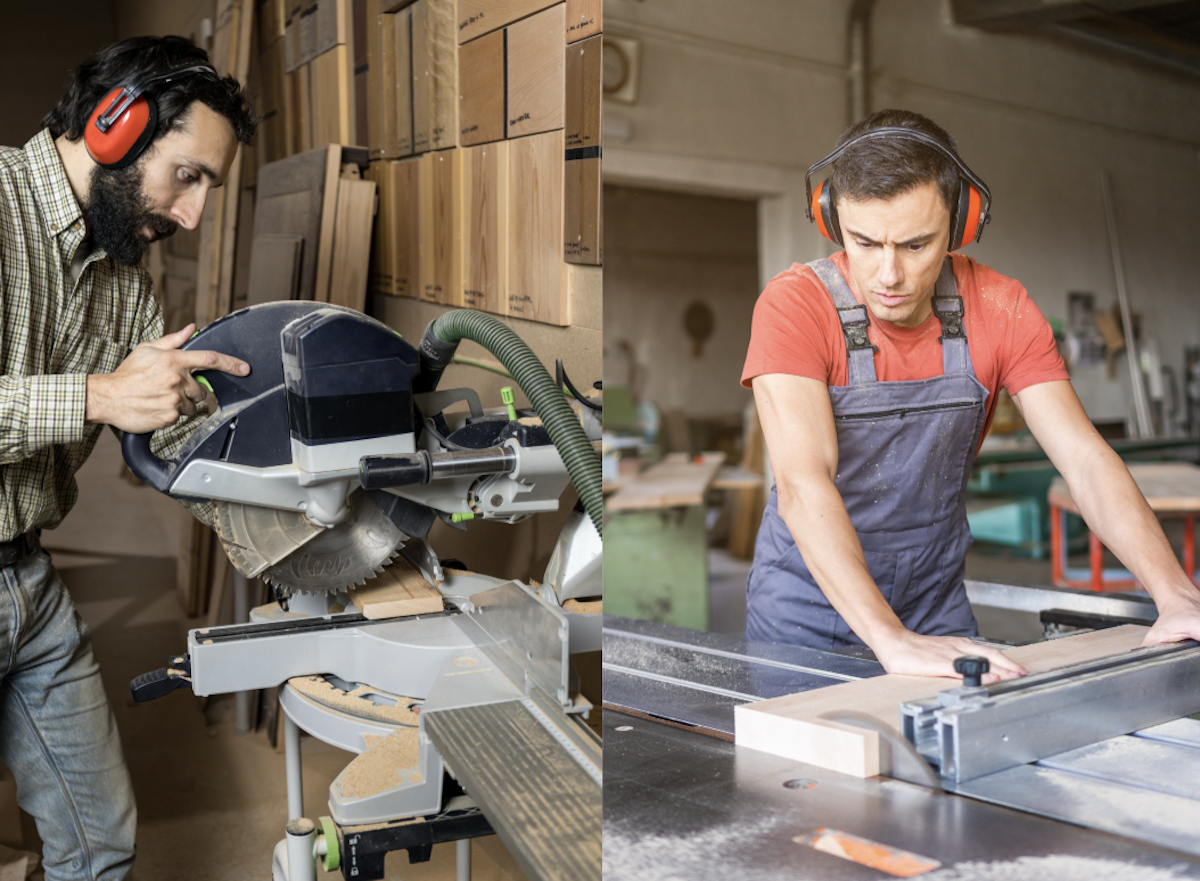

We may earn revenue from the products available on this page and participate in affiliate programs. Learn More ›
We may earn revenue from the products available on this page and participate in affiliate programs. Learn More ›
Power saws give DIYers the muscle they need to create a variety of projects in a short amount of time. Among the treasured essentials in a DIYer’s arsenal are the table saw and miter saw.. While one has a stationary blade that cuts material that’s moved through it and the other requires the DIYer to move the blade to cut the material, their uses overlap and complement each other in a number of ways.
If you’re ready to take your carpentry skills to the next level, you ultimately may want to own both of these types of saws. But to be sure, first examine the two side by side—miter saw vs. table saw—in this guide to learn how they differ and to understand the pros and cons of each.
What is a miter saw?
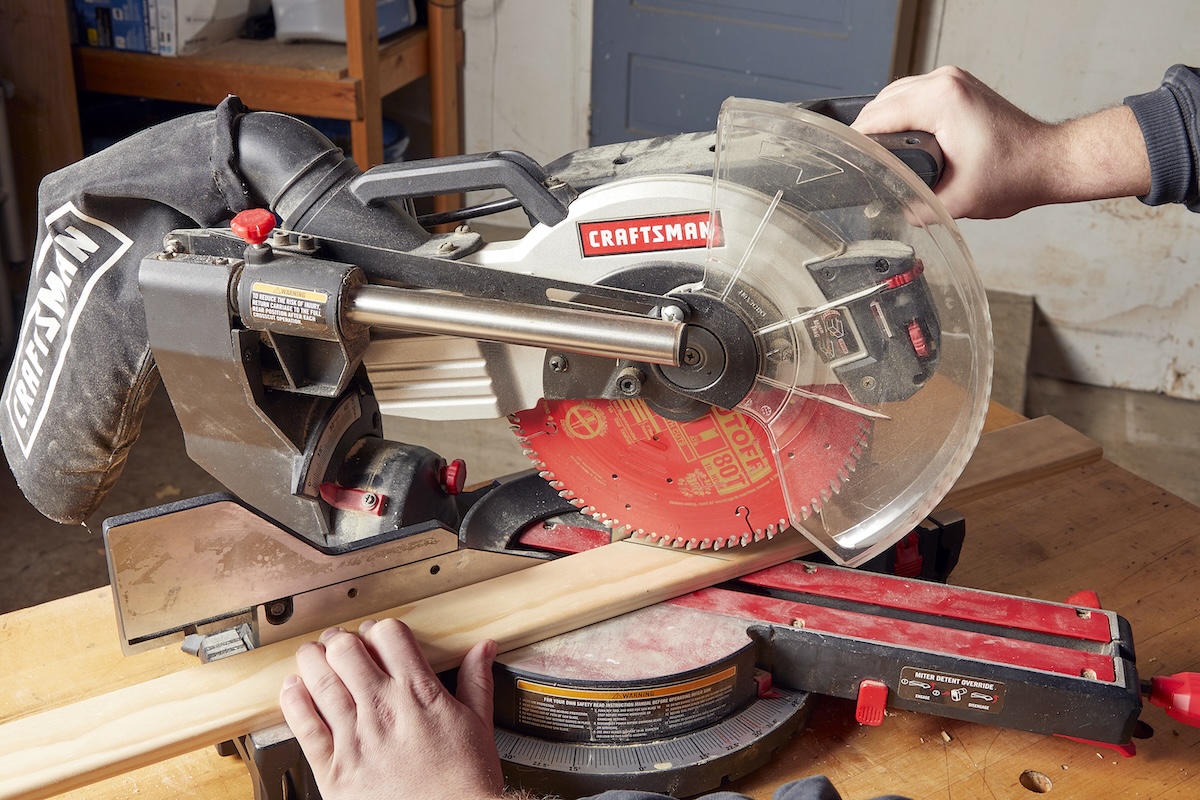
A miter saw consists of a circular blade on an arm that the user moves to make crosscuts on wood that’s usually no wider than the blade’s diameter. However, a sliding miter saw can add up to 2 inches of more cut capacity to a miter saw. There are a few kinds of miter saws, too. A compound miter saw can also make miter cuts and a bevel miter saw can tilt to make beveled cuts. With proper infeed and outfeed support, it can cut boards of any length.
Note: While a chop saw is often called a miter saw, it’s not. A chop saw just makes straight cuts.
Best for: Precisely cutting dimensional lumber, trimwork, flooring, and any other boards that fit on the miter saw deck.
Pros: Makes cutting dimensional lumber and mitering the ends of trimwork easier, and is easy to set up.
Cons: Does not cut sheet goods and the weight of the saw typically increases as the number of cutting features increases.
What is a table saw?
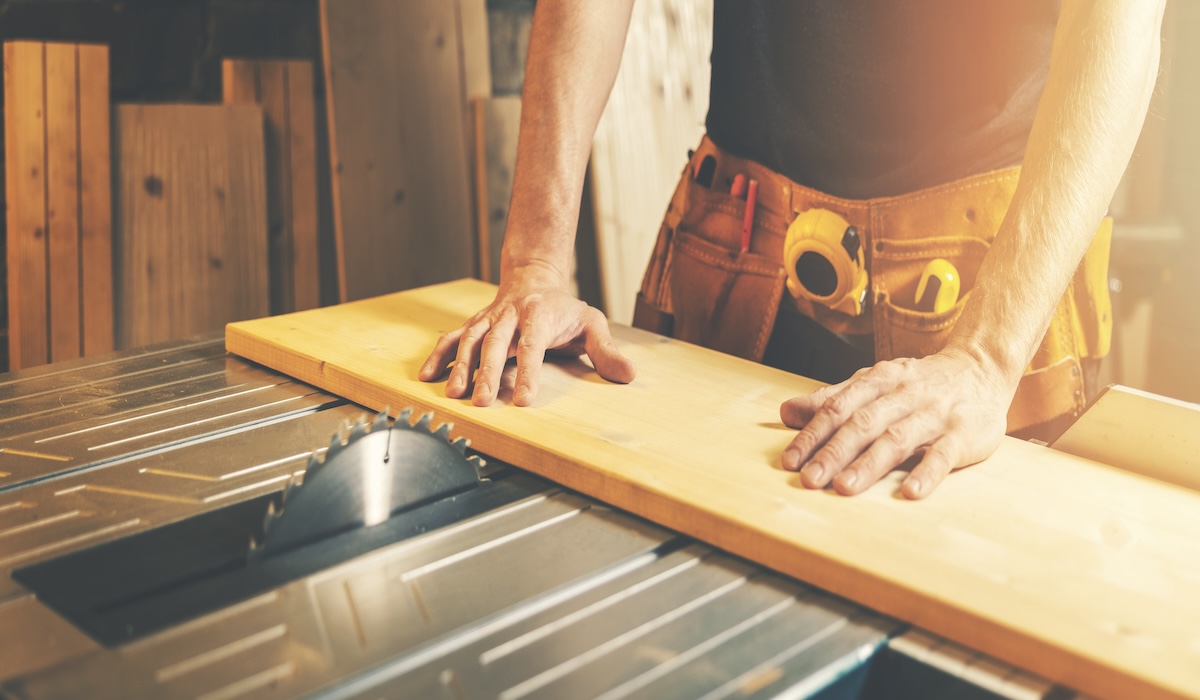
A table saw has a rotating stationary circular blade that the user moves material through to make lengthwise cuts on material. With the addition of a cross cut sled, a miter gauge, and other jigs, you can make similar cuts as on a miter saw. While a shop table saw can be used for precise finish carpentry, a DIY table saw is a rough carpentry tool.
Best for: Cutting wider material, rip cuts down the length of a board, rough carpentry
Pros: Efficient way to rip or bevel cut along the length of a board and can be used to break down sheet goods with proper infeed and outfeed support.
Cons: Many DIY table saws are heavy and cost more than a miter saw.
Differences Between Miter Saws and Table Saws
Miter saws and table saws are two power saws that are not used for the same types of cuts. Safety issues, cost, and portability are also different. Here’s what you need to know about miter vs table saw.
Types of cuts
The main difference between miter saws and table saws is the kinds of cuts they make. DIYers use miter saws and table saws to make specific types of cuts.
Cutting long materials
A table saw features a flat surface that supports wood as it’s being cut. The user controls and guides the wood, feeding it into a spinning saw blade in the center of the table. It can be an excellent tool for cutting large pieces, such as 4-foot-by-8-foot sheets of plywood—if you have infeed and outfeed support.
With a miter saw, the user places long material, such as a 2×4, trim board, a siding plank, on a narrow base at the front of the saw, and then manually lowers the spinning blade (via a handle encased in a moveable head) to cut the piece to the desired length. Using infeed and outfeed support is also important when cutting boards longer than the miter saw table.
Cutting angles
The verb “miter” means to join two pieces at a 90-degree angle, such as the way the corners of a picture frame meet, and a miter saw makes cutting angles on long pieces a snap. The miter saw can be swiveled to the detents in the miter gauge detent plate to make an angled cut. Each detent is a different angle, and the saw is locked in to secure it in that position. For this reason, miter saws are a staple of the trim carpentry industry, as they cut the complex angles necessary for installing trim and crown molding.
Table saws are better at cutting angles on a length of a board. Just like with a miter saw, you can adjust the angle of the table saw blade. However, it can be more difficult to cut precise angles with a table saw because the user must position the wood at the correct angle and hold it steady while feeding it through the spinning blade. Infeed and outfeed support can be essential.
Cutting bevels
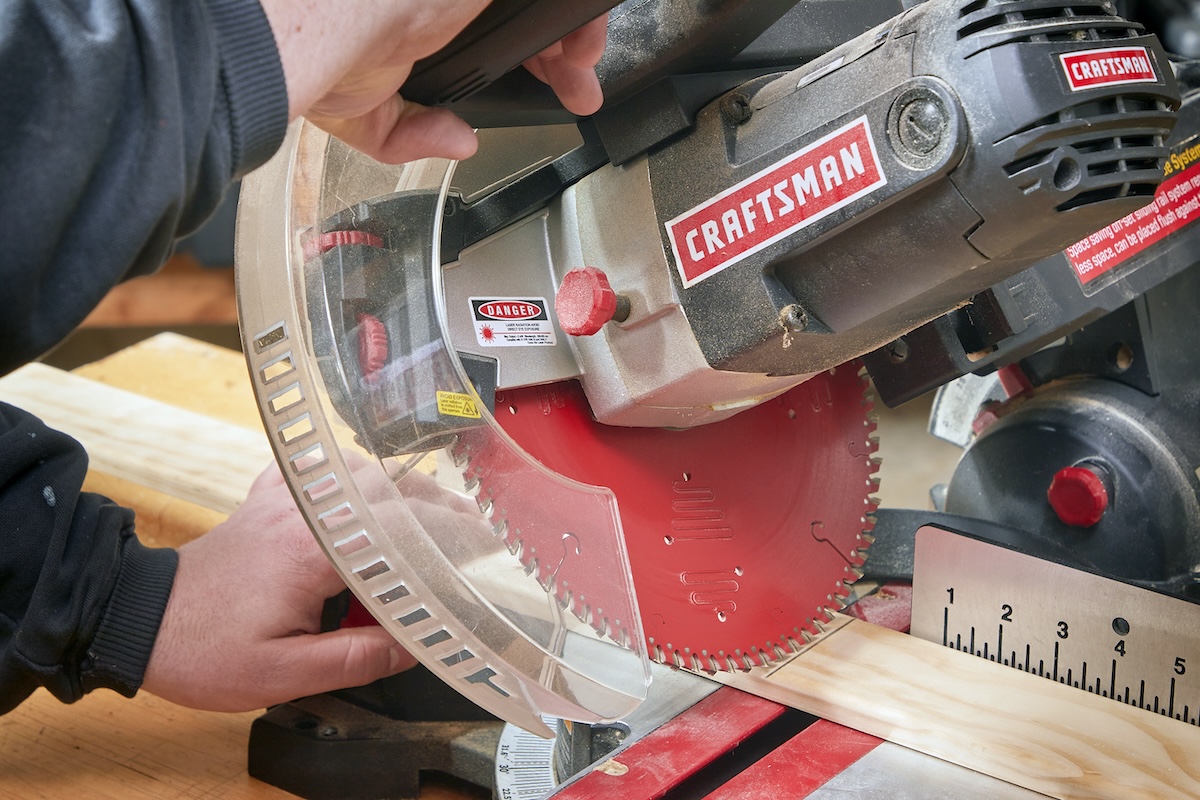
When cutting bevels, miter saws are better across the grain and table saws are better at cutting bevels along the grain. In addition to cutting off the end of a board on an angle, the head of some miter saws can be tilted laterally to cut a bevel at the same time, creating a sloped edge instead of a flat edge. Beveled cuts are used mainly in trim work to allow for seamless transitions when installing trim in corners.
The blade on a table saw can be adjusted from beneath the table to cut on a bevel as well but, like cutting angles, cutting bevels is also more challenging on a table saw. Cutting bevels on a table saw is an advanced carpentry technique and proper infeed and outfeed support is important.
Cut capacity
Now let’s get into cut capacity for table saw vs. miter saw. Since a miter saw is operated by lowering a spinning blade, it cannot make a cut that’s longer than the width of the blade unless it is a sliding miter saw that can increase the cut width up to 2 inches. Miter saws come in 8-inch, 10-inch, and 12-inch blade widths. The larger blades are necessary for cutting wider material, such as siding planks and large crown molding.
A table saw, on the other hand, can cut any length of a board that is being properly supported at the same height as the table, because the blade is stationary, and the wood is fed into the blade. But cut width depends on table size and fence capacity, and cut depth depends on blade size. However, it’s rare that a DIYer would have material thicker than a DIY table saw can handle.
Portability
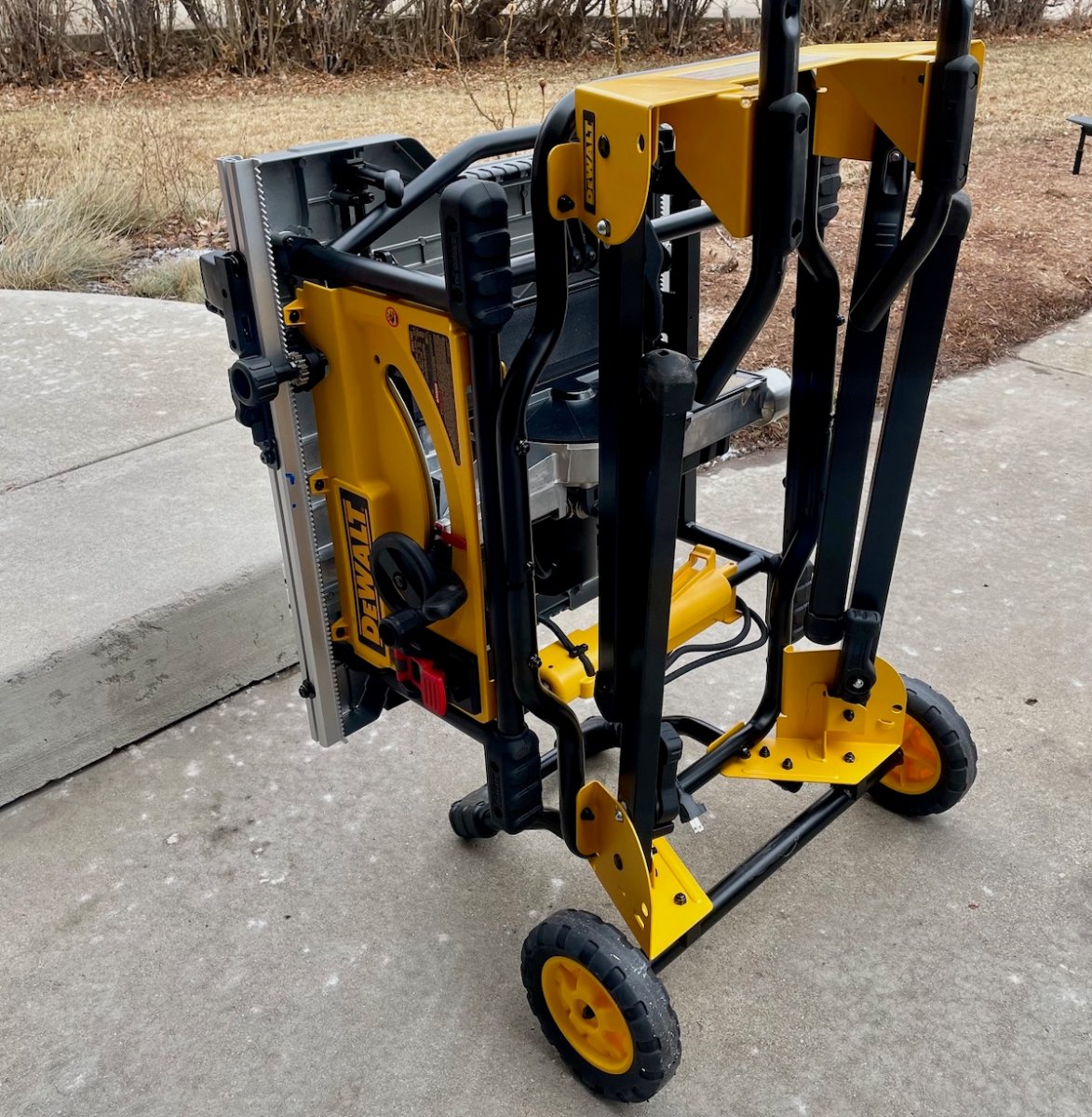
Although table saws can weigh as little as 50 pounds, many weigh more and can come with wheeled stands that allow the user to roll them from place to place. Shop table saws are considered stationary and are bolted to solid steel legs or built into a cabinet, making them heavy (up to 300 pounds), unwieldy, and difficult to move.
While some smaller miter saws weigh as little as 20 pounds, most miter saws are in the 50- to 60-pound range and can be loaded in the back of a pickup or the trunk of a car, or just carried where needed. If you intend to create all your woodworking projects in a workshop, the miter saw can be secured to a miter saw stand or countertop to make it stationary.
Precision
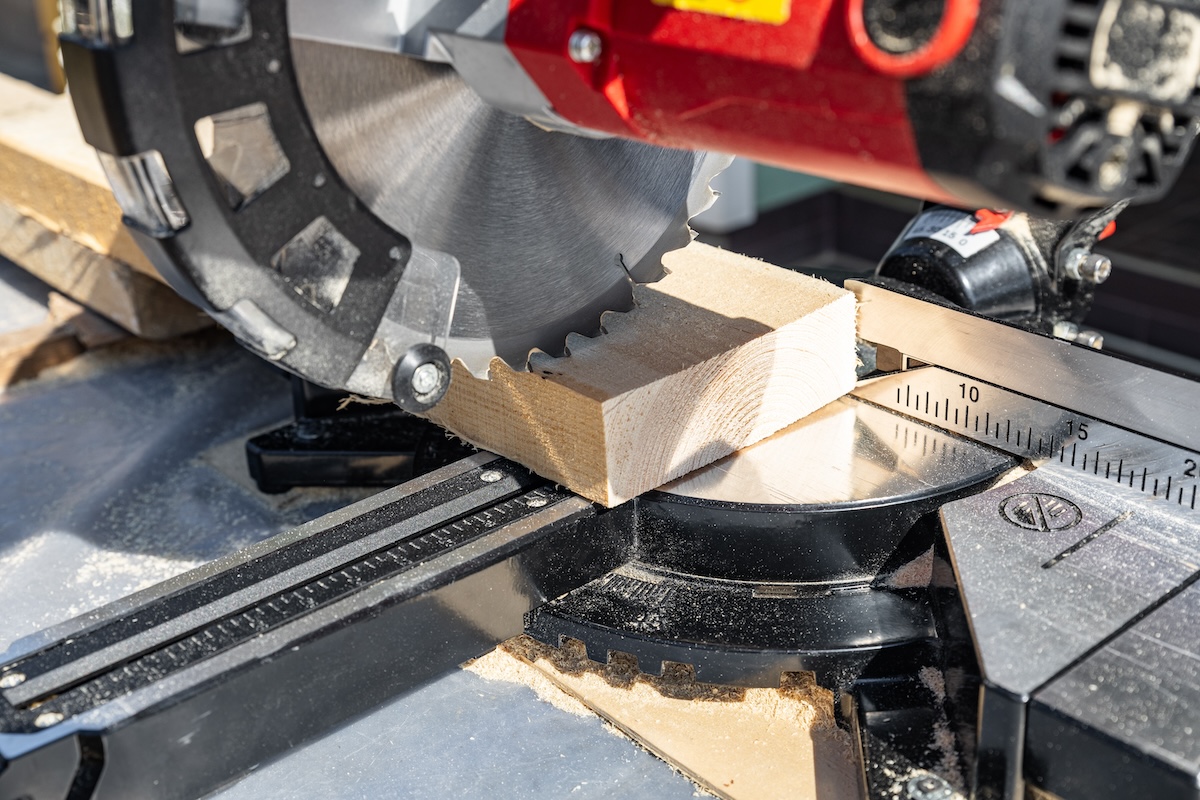
A miter saw is more precise because the wood is held snugly against the back of the saw (called the fence) during the entire cut. Miter saw fences serve the same purpose as table saw fences: to keep the material flush against it. But the engagement with the fence is different. On a miter saw, the material is stationary and the user presses the material to the fence.
On a table saw, the work is in motion and slides along the fence. The material is constantly in motion, and if the user varies the pressure on the wood as it’s being pushed into the blade, it can cause slightly jagged areas on the cut edge of the board. The slight imprecision that can occur on table saw cuts usually won’t affect large projects, such as building a storage shed, but can result in an amateurish look if installing trim. Also, most nonprofessional table saws, regardless of blade, are rough carpentry tools and will leave swirl marks that need to be sanded in woodworking applications, such as making a table.
Safety
All power tools can be dangerous, and manufacturer safety instructions should be followed explicitly when using them, but more injuries occur using table saws than miter saws. The United States Consumer Product Safety Commission estimates that between 2004 and 2020, there were approximately 32,000 emergency department-treated blade-contact injuries associated with table saws annually.
Many table saw injuries are a result of kickback, which occurs when the blade catches on the wood and either pulls the user’s hand into the blade or throws the wood back in their face. There is active injury mitigation technology (AIM) on some table saws that detects when a human body part makes contact. However, in my experience, those saws can also stop working if the wood is slightly wet from being treated.
Both tools can abruptly snag material. Since table saws require the fence and the blade to be parallel to each other to function properly, and the work is in motion, this can be a pinch point that causes the piece to kick back at the user. When a miter saw causes kickback and snags, it’s usually because the user is holding a piece too loosely. The blade can pick it up and throw it, which is why they come with clamps.
Still, miter saw injuries often occur when the DIYer tries to switch the hand that’s holding the wood with the hand that’s lowering the blade and in the process, inadvertently crossing a hand or an arm in front of the moving blade. And sawdust and debris can also cause eye injuries when using any power tool.
Versatility
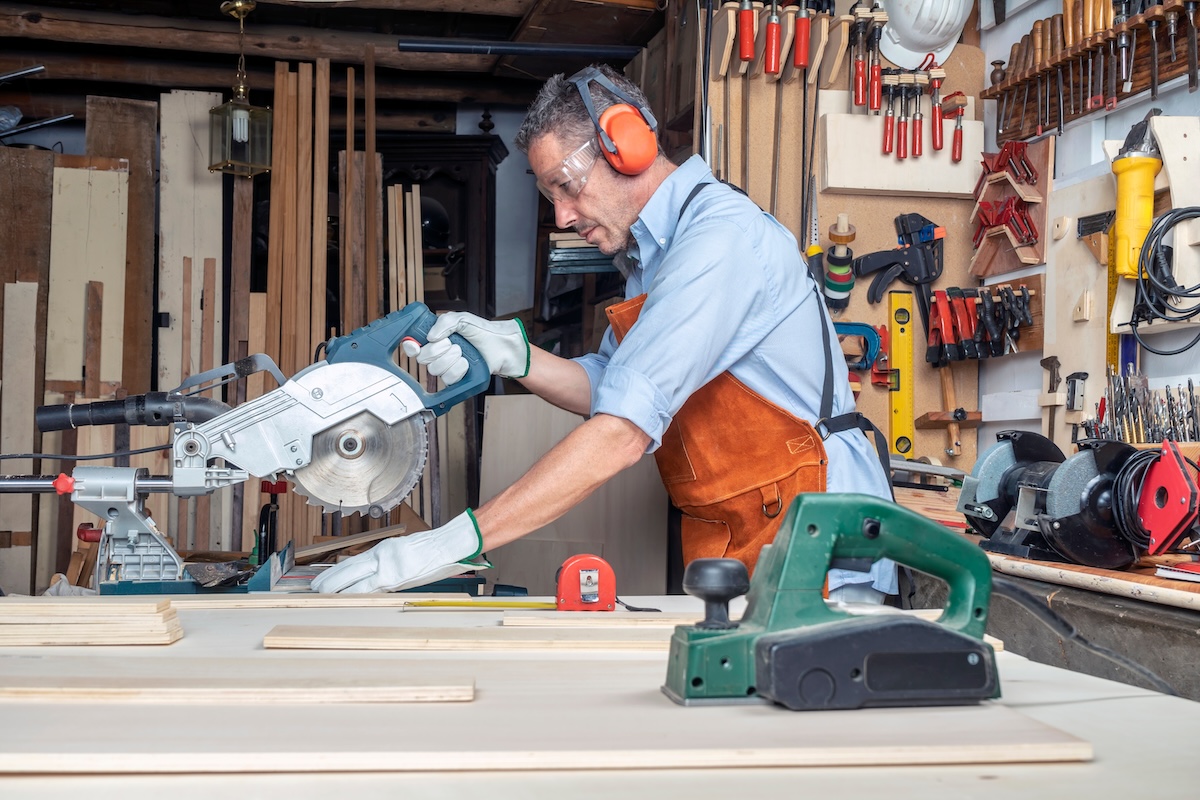
While a miter saw cannot cut sheet goods, a table saw can make virtually any cut a miter saw can make when some accessories and jigs are used. There are a variety of accessories that you can purchased to use with a table saw, such as a miter gauge to simplify and safely make angle cuts. But it’s important to understand that while a table saw is more versatile, making complex cuts on it requires advanced carpentry knowledge and skill.
Beginner woodworkers should not attempt to make angled and beveled cuts on a table saw because doing so increases the risk of injury.
Cost
Miter saws start around $120 for a compact 7 1/4-inch model and run as much as $1,900 for a contractor-quality sliding miter saw. Table saws with an attachable stand start around $220 and run up to $8,000 for a high-end saw in a built-in cabinet. Serious DIYers can get a decent miter saw for around $170, and a good table saw for around $430.
FAQ
It’s like comparing apples and oranges. They are both types of power saws, but they are used differently by DIYers. While a table saw can be more versatile with the addition of accessories, a DIY table saw is for rough carpentry. A miter saw offers more precision but will not cut sheet goods. So if you are weighing a table saw or miter saw purchase, consider the projects you’d like to do.
No, you can’t use a miter saw like a table saw. A miter saw’s table and blade size limit the size of material that can be cut.
It depends on what you want to accomplish. If you want to break down sheet goods, a track saw is a smart purchase. If you want to install trimwork like baseboards, a miter saw is a useful tool. For those who want to build a table or rip deck boards, a table saw is the tool to use.
Yes, you can rip a 2×4 with a table saw. You can’t rip a 2×4 with a miter saw.
